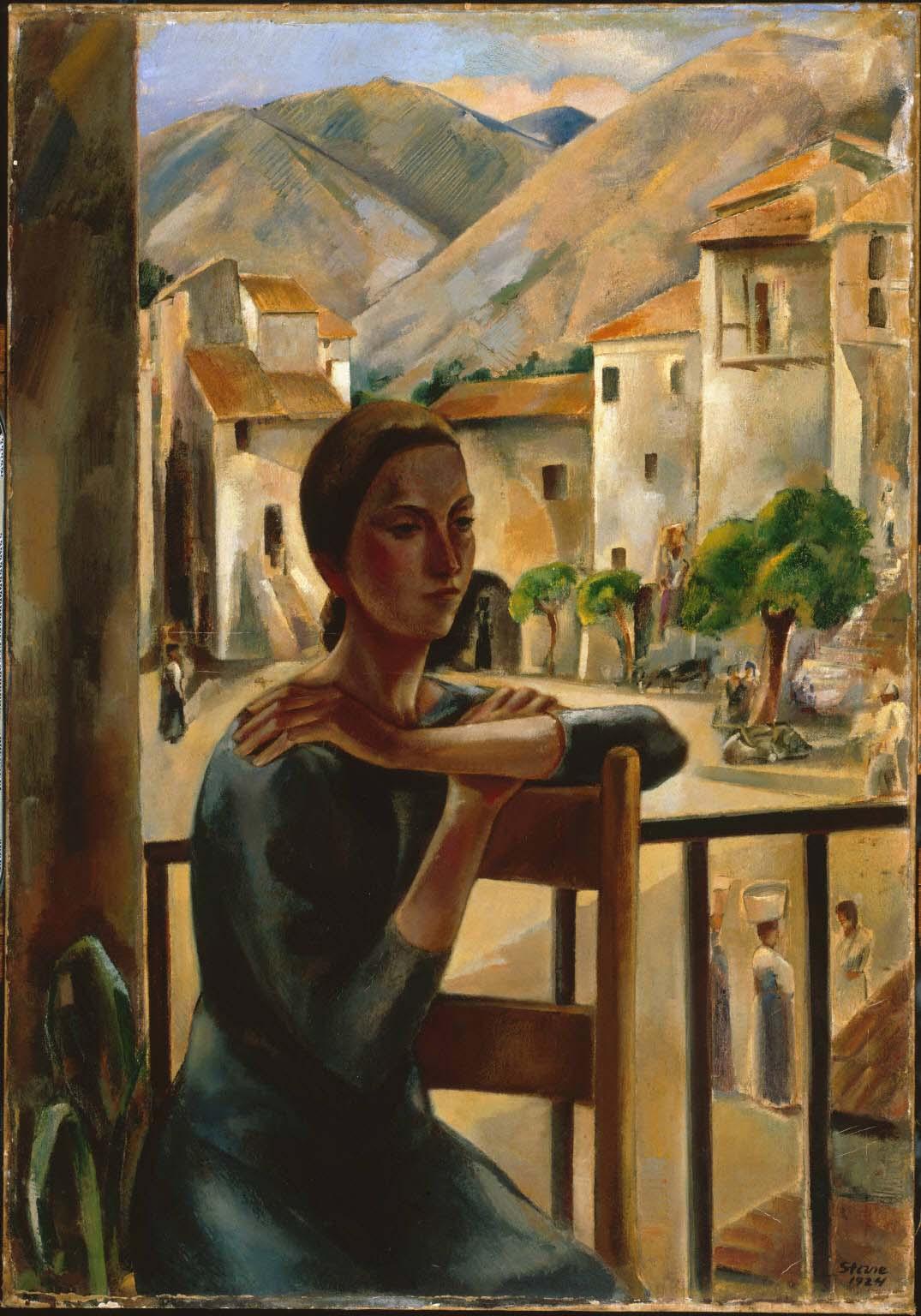Afternoon
Maurice Sterne ( 1924 )

Afternoon was painted in 1924, during Maurice Sterne’s most productive period in Anticoli Corrado, which he wrote “had a hold on me from the first time I saw it” in 1908. “The ancient houses,” he wrote, “seem to grow from the rocks and foliage of the mountain side. There is no dividing line between architecture and landscape. The people and animals live together—no dividing line between man and beast. Unity. Harmony.” Although one of the poorest towns in Italy, it was distinguished by inhabitants whose “statuesque carriage and noble faces” had attracted many painters before Sterne. Afternoon depicts an Anticolan woman seated on a balcony overlooking the Piazza della Villa. Since Sterne’s studio was located away from the city on a hill, the work may have been painted at the sitter’s home instead.
The figure is depicted with incisive line and minimal detail, and is accentuated by its placement as a silhouette against the sun-filled piazza. In the manner of Cézanne, Sterne has structured the mountainous landscape and buildings into layers of richly modulated greens, oranges, and browns, applied with a palette knife in some sections. The frame has geometric, floral, and cherub motifs hand-painted in blue tempera, gold leaf, and brown oils over white gesso, a type of primer; it may have been crafted in Anticoli especially for this work because its colors complement and enhance those in the painting.
The exotic locale and the sitter’s reflective expression appealed to Phillips’s sense of the romantic. He described Afternoon as “glamorous and haunting in its sense of ancient mountains and…civilizations, and melancholy with the mood of the shadowed dreamer on the balcony.” Phillips also told Sterne in 1926, “Your pictures are far less dependent than Gauguin’s on exotic glamour, and much more important in every way.” He admired the painting for its compositional strength, proclaiming it “far and away the outstanding picture” in the 1926 Sterne exhibition at Scott and Fowles. Sterne himself, as late as 1938, could think of no better work he had done